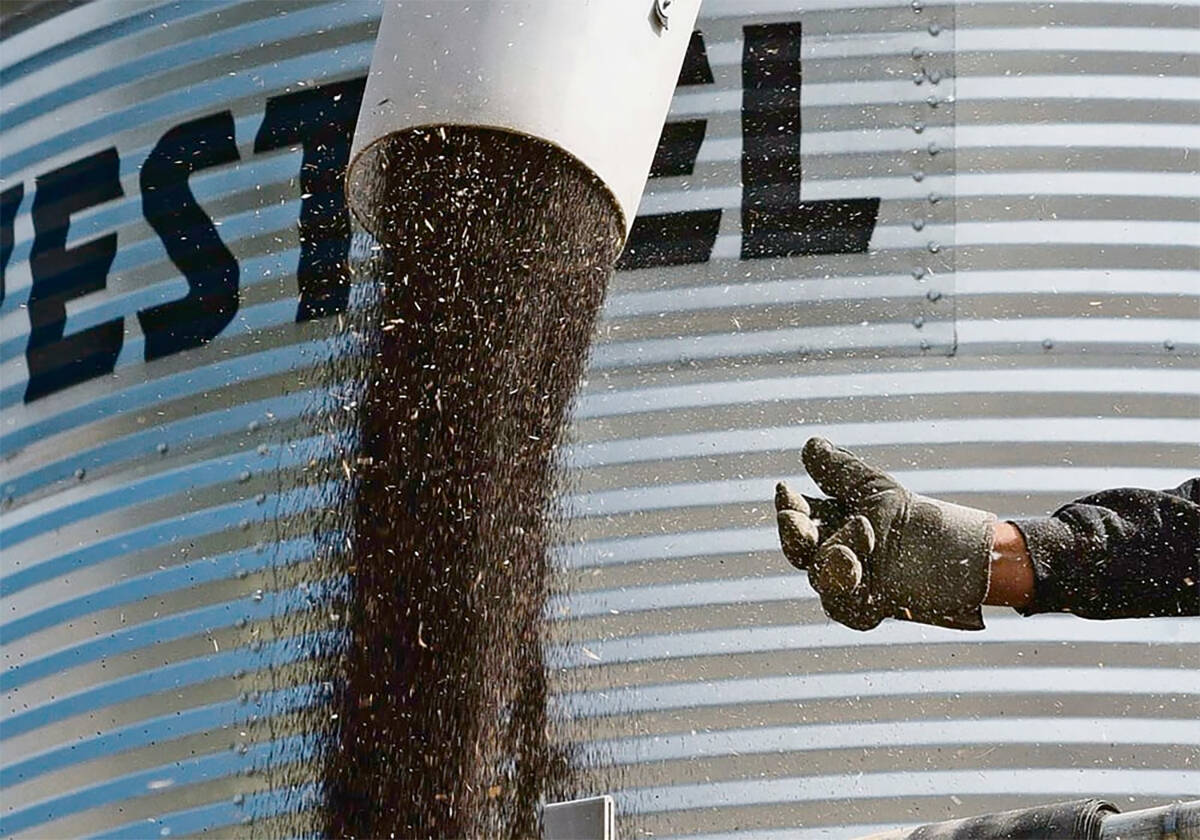New milling classes would help ensure that varieties grown have qualities that millers are demanding
The Canadian Grain Commission is proposing a series of changes to Canada’s wheat classification system.
The changes, which include the creation of a new class of milling wheat and the reclassification of some of Western Canada’s most popular Canada Western Red Spring varieties, are aimed at protecting Canadian wheat markets and ensuring that end users are satisfied with the grain that they buy.
Commission officials say the changes will ensure greater consistency and predictability in the quality of Canadian wheat.
“What we’re hearing is that it’s time to have a good look at this,” said chief commissioner Elwin Hermanson.
Read Also

Farmers urged to be grain-safe this fall
Working around grain bins comes with risk, from farmers falling to drowning in grain: Experts have five tips to help avoid grain-related accidents this harvest.
”If we do this right, it helps us to compete in the marketplace, and that’s what we are hoping to do.”
Last month, the commission published an online document at www.grainscanada.gc.ca that described the proposed changes.
Industry stakeholders, including farmers, wheat breeders, end users and grain handling companies, have two months to respond to the proposals.
A 60-day consultation period started Feb. 20.
Among other things, the document suggests that the quality criteria for the CWRS class be tightened and that some of Western Canada’s most widely grown CWRS varieties be reclassified into a new milling class.
It would comprise lower quality milling wheats that typically have lower gluten strength than higher quality CWRS varieties.
Harvest, Lillian and Unity have been identified as potential candidates for reclassification.
It is assumed that wheat varieties designated to the new milling class would command a slightly lower price on world markets and would compete more effectively with high-yielding U.S. varieties that are suitable for milling but generally have lower protein content and lower gluten strength.
The commission is also proposing a thorough review of grain quality parameters in the Canada Prairie Spring Red class as well as the Canada Western General Purpose class.
It wants to ensure that varieties within those categories are properly classified and that they are meeting expectations of end users.
Hermanson said the wheat classification review and the proposed re-alignment of the CWRS class were precipitated by concerns over the quality of Canadian grain sold to end-users.
“About three or four years ago … there was concern expressed by consumers, particularly of CWRS varieties, that our gluten strength was too low,” Hermanson said.
“Some of that, we discovered, was because some varieties that were in the low end of the gluten scale … were being planted on a lot of acres, and that tended to lower the gluten strength in the class as a whole.”
Abundant rainfall in late June and early July, when gluten proteins are normally formed in wheat, can also affect gluten strength in harvested wheat.
Excessive rainfall for two consecutive years lowered gluten strength in the western Canadian wheat crop, prompting concerns from end users and suggestions from Canadian grain marketers that a review might benefit the industry.
Dan Mazier, a Manitoba farmer and president of Keystone Agricultural Producers, said the grain commission’s decision to review the wheat classification system will benefit growers and others in the industry.
“I think it’s a good thing,” Mazier said.“Right now, there’s a definite disconnect between what our end users are asking for … and what Canadian growers are (growing).”
Mazier said there is a concern that wheat classes within Canada’s current system are too broad or too vaguely defined.
For example, end users who require wheat with a specific gluten strength may not be getting it from CWRS because the range of gluten values within the class is too wide.
In addition, many farmers are selecting varieties without any consideration of gluten strength, even though end users are demanding that quality specifically.
“This will allow farmers to focus on what end users are asking for,” Mazier said. “We’ll grow what end users want … but if we want to grow a premium export quality product, then we need to know (what characteristics are most important).”
Hermanson said it could be several months before a final decision is made on the proposed changes.
Any changes stemming from the review will be assessed after all relevant groups have been consulted.
Changes supported by the industry will be implemented gradually to minimize the potential for market disruption or loss of income at the farm level, he added.
Other changes in the grain commission proposal include:
- The removal of Unity and Lillian as CWRS check varieties in central and western bread wheat trials.
- The introduction of Glenn and Carberry as new CRWS checks in central and western bread wheat trials, with Glenn serving as the upper limit for gluten strength and Carberry serving as the lower limit.
- The establishment of new CWRS check varieties in parkland bread wheat trials.
- The introduction of new check varieties in the CPRS class including AC Foremost, Faller and Unity. Unity is currently in the CWRS class. Faller is an American variety.
- Reviews of all varieties in the CWPG and CPSR classes, including possible re-establishment of upper and lower quality parameters and reclassification of varieties that do not meet those criteria.
- A review of Canada Western Extra Strong and Canada Prairie Spring White classes, which are currently underused and may be unnecessary if varieties are reclassified into the CPSR and Canada Western Hard White Spring classes.















